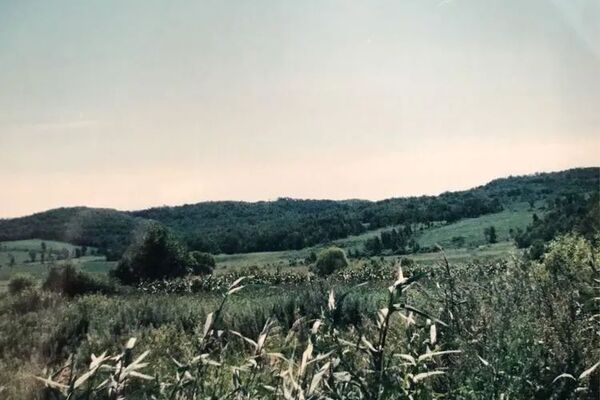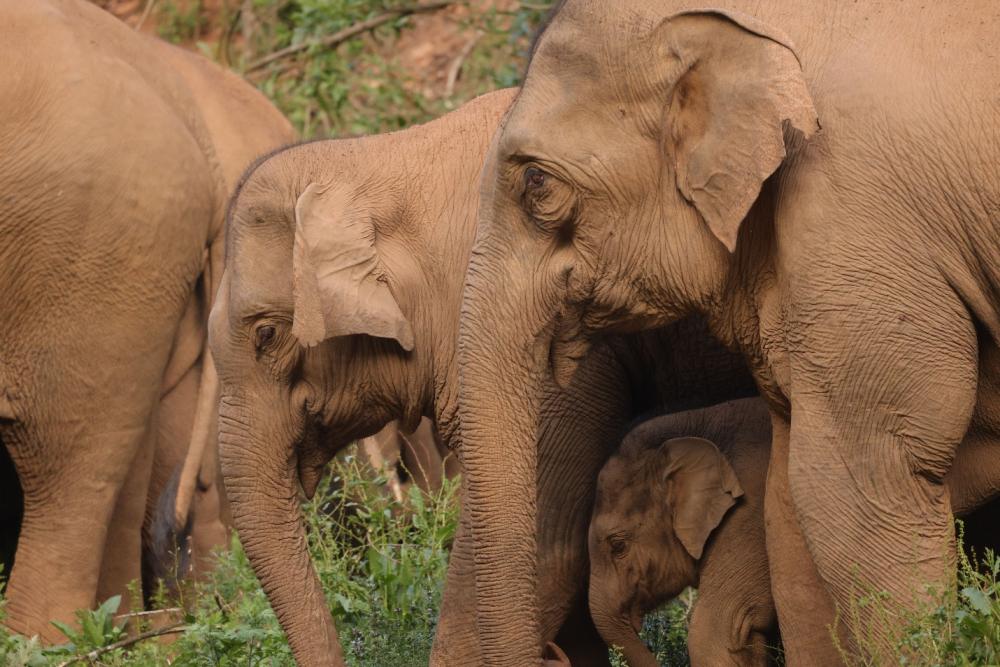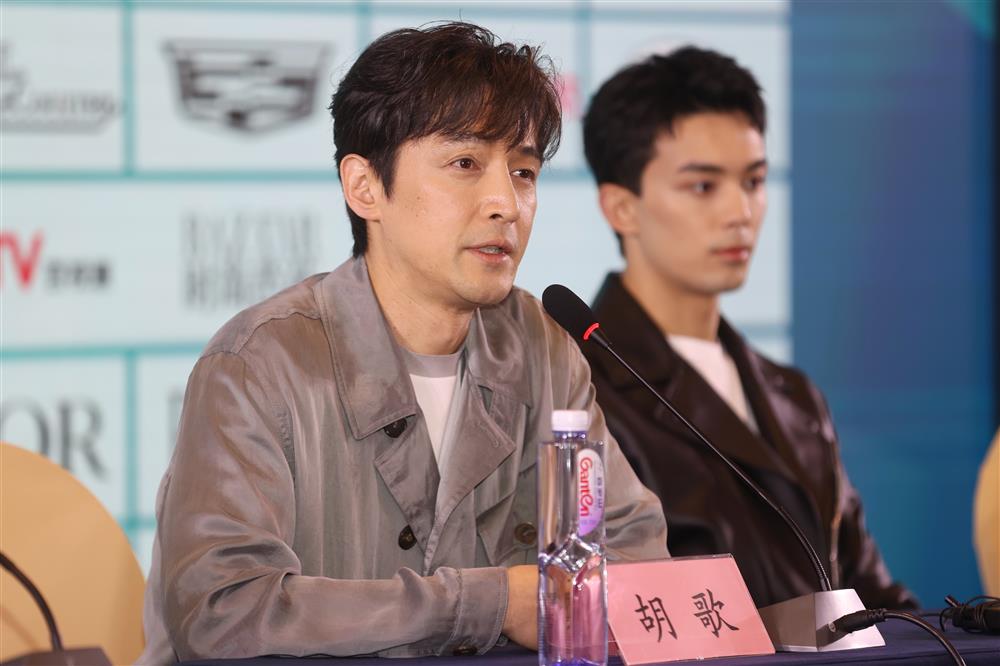A historical mystery has been unraveled, deep in the continuous Shengshan Mountains of Sun Wu in Heilongjiang Province, Shengshan | Fortress | Sun Wu
Since ancient times, fortresses, as strategic fortifications, have not only traversed the smoke of history, but also exuded a strong sense of mystery. In the depths of the continuous Shengshan Mountains in Sunwu, Heilongjiang Province, there is a large-scale fortress ruins, which is the evidence left by the Japanese invasion of China in that war - fortress ruins.
The weather in the northern part of the summer is still very hot, so stuffy that it makes people sweat profusely. On the day when I returned to my second hometown Heihe, I took the time to get up early and went to Sunwu County, which is a hundred kilometers away. I am familiar with Sun Wu. When I jumped back to Shanghai to visit relatives, I passed through this place several times, but what I am unfamiliar with is the history of the fortress.
Sunlight shines on the streets of Sun Wu. The trees in the streets washed by a rainstorm are greener and more vibrant. The streets are noisy, with malls, shops and small stalls selling along the streets. They are full of fireworks and bustling figures, highlighting happiness and ease. Walking in the corners of the small town of Sun Wu, one can see Japanese ruins and broken walls everywhere. The big Sun Wu, the small Harbin. In the past, the Japanese aggressors easily occupied Sun Wu and built banks, post offices, foreign companies, airports, and even the surrounding mountains were named after Japanese names.
Because I was eager to go to Shengshan Fortress, I didn't stay much in the county town. Just a quick glance made me feel a bit solemn.
Outside the city of Sunwu, on the edge of the former Longxun Pass, a water gate stands amidst lush weeds. On this cement constructed water gate, there are pairs of Chinese laborers' footprints, some barefoot and others wearing rubber shoes. These pairs of labor footprints have not been eroded by the storms of the century, but have become increasingly clear. What does this solidified labor footprint signify? Standing on the gate and gazing into the distance, two graves of laborers covered by green trees can be vaguely distinguished. These laborers will forever rest on this land that has been enslaved by the Japanese Kwantung Army. These footprints are burning and painful, leaving me speechless.
The car was speeding towards Shengshan, and there seemed to be a low labor horn in my ear accompanied by the sound of the wind
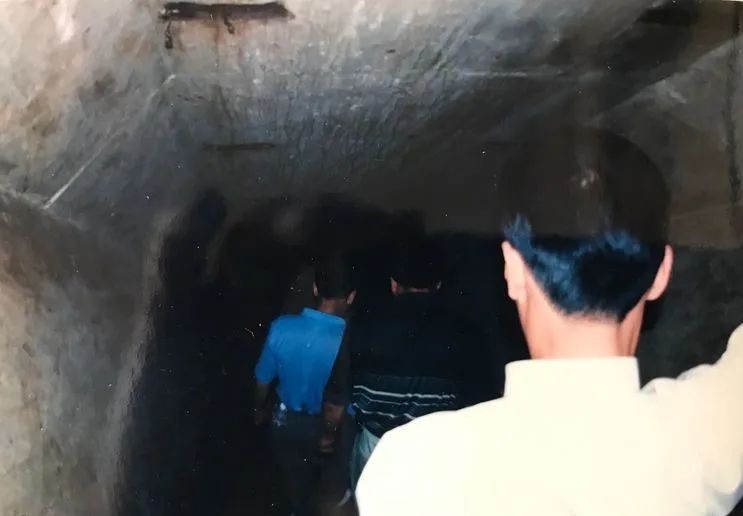
Shengshan, 78 years ago, broke through the dreams of invaders
Due to a rainstorm the night before, the road to Shengshan was muddy, and the car had to make a detour. When I went to visit, Shengshan had not yet become a tourist attraction. It was just an endless wilderness, allowing me to travel freely
As soon as you leave the county town, Shengshan is like a natural barrier stretching across the Heilongjiang River, facing Russia across the river to the north. In the years when the Japanese invaders ravaged with iron hooves, this place became a haunted cave. The military front position "Shengshan Fortress" carefully constructed by the Japanese aggressors is located among the nearby peaks and mountains. In 1945, when the Soviet Red Army invaded China and broke through the remnants of the "Emperor" dream, it was also from here that they landed.
Ahead was another muddy area soaked in rainwater, and the car couldn't get close to the foot of the mountain. We had to get off the car. As the saying goes, the dead horse runs away from the mountain. It was hot and muddy, and walking to the foot of the mountain, my legs were weak. The sun was scorching, the mountain was high, and the trees were dense. There was no wind at the foot of the mountain, and we all felt like we were being pulled out of the water. Continuing along a grassy path, close to the foot of the mountain, one can see the military road that was once laid stretching around the mountain, solid and level, and vehicles can still move, but the road is overgrown with weeds.
Turning into the mountain pass, there is a stone chamber, which was the first guard post in the past. Across from it is an octagonal cement stone platform, possibly used for standing guard and observation. Now, a big tree has grown on the platform. Walking around the mountain for less than a hundred meters, there are also two watchtowers built against the mountain, with three sides deep into the mountainside and covered in soil and rock. Only the front is exposed, resembling a cave, which is both hidden and sturdy, truly exuding a sense of awe.
We searched in the mountains for nearly half an hour and finally found a bare hole covered in weeds at the mountaintop. The cave entrance is very small, and people can only bend down to enter. The heat wave outside the cave hits people, but inside the cave, there are gusts of yin wind rushing towards them.
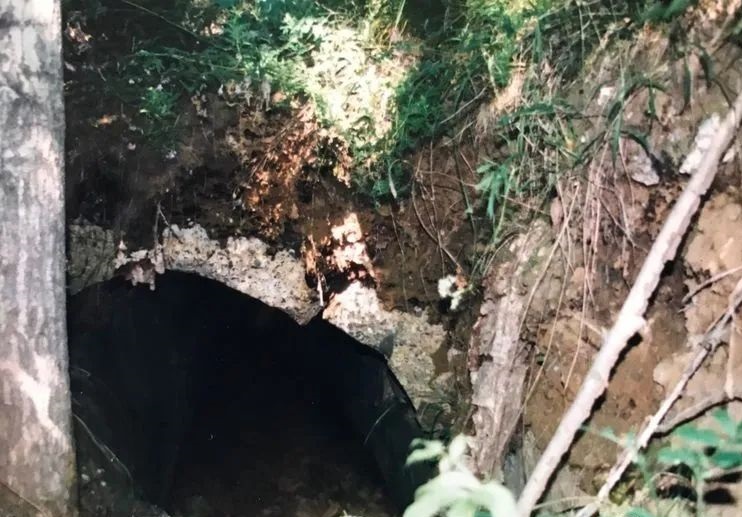
Exploring mysterious cave openings under the illumination of rechargeable mine lamps
Old Yang, who is accompanying me, is a careful person. He brought a rechargeable miner's lamp and opened the way for lighting first. The cave was damp, and in the silence, one could still hear the sound of dripping water. The walls of the cave are all made of cement, and after all these years, they are still strong and smooth. Entering an underground pit allows people to walk straight down. The pit is about 2 meters high and 1.2 meters wide. In the long pit, one may accidentally be hit by a bat hiding here or tripped by broken bones under their feet. We walked for half an hour in the long cement corridor and found an unfathomable trap below - there were two openings in the front corridor, one blocked by mud, and the other long opening led to an unknown direction
I really wanted to go to the deepest part, but due to the insufficient power supply of the mine lamp, I was forced to return, leaving regret in my heart. The depths of this cave remain an unknown mystery to this day.
The fortress, so hard that it was once considered "impossible to cross"
Step out of the cave and continue exploring in the mountains under the scorching sun.
The cement steps in the mountains climb upwards, revealing the buildings, halls, halls, and offices of the past, with a considerable scale of construction. A half meter high cement wall is built along the mountainside, with a water tank below, which is a drainage ditch to prevent soil erosion. Moreover, cement is used to reinforce the turning points of the flowing water in the mountain ditches next to the highway, demonstrating the good work of "putting one's heart into it".

Walking further into the mountains, I suddenly saw a barracks with dozens of rooms. The pale cement frame, black doors and windows, like a devil with a huge mouth and strange eyes. Muster the courage to break in, the exquisite architecture and complete facilities are not temporary temporary locations, and the long-term ambition of the Japanese invasion is clear at a glance. The cement wall is smooth as before, and is regularly inlaid with wooden blocks for decoration. Although most of the wooden blocks were burned down, one can still imagine the magnificence of their decoration back then. The cow dung on the ground is about a foot deep and has dried up and clumped up. The cow tramples on it like it was before, with potholes and honeycombs, which are caused by nearby mountain people herding cattle.
There is a nearly 100 square meter space in front of the house, and there seems to be an echo when stepping on it. It is suspected that there may be a basement. Each rear window has a safe passage leading directly to the roof. It is understood that there are up to four barracks of this scale around Shengshan, each of which can accommodate about a hundred people.
Fortress Barracks Site
There is also an underground ammunition depot in a hidden area nearby, with double doors at the entrance. The outline and scale of the entrance light can be vaguely distinguished, the four walls are smooth, and the ceiling is covered with water droplets. The construction process and construction technology are exquisite. In this ammunition depot, we found three locations, and in one of them, we also found many discarded bullets from the Japanese army. Half of a mortar shell has been buried in dust, half is exposed to the ground, and the tail wire has not yet been pulled open. The ground was covered in rusty magazine clips and various shapes of white bones
The center of the position is the "Yarei Highland" where the fortress's artillery is concentrated, with four gun turret ruins distributed in a straight line every 20 meters. The firing well from underground to above ground is more than 10 meters deep, providing for the lifting and lowering of cannons. After being captured and sent back to his country, Private Kitahara Maowei, who served here at that time, wrote a memoir called "Amur's Blood". In the book, he described that the gun turrets on the "Yarei Heights" could rise and fall freely with just a press of a button. Even if Soviet tanks attacked, they would never have crossed such a wide anti tank trench.
The Shengshan Fortress, along with facilities such as anti tank trenches, barbed wire, scattered trenches, gun turrets, machine gun shelters, and underground barracks, are all poured with high-strength cement into the abdomen of the mountain. The entrance is equipped with camouflage and air disinfection devices. The thickness of the underground barracks can withstand the bombardment of 50 ton tanks and heavy artillery. The large semi above ground building is the base of the infantry security squadron, approximately 80 meters long, entirely made of reinforced concrete and divided into more than ten rooms.

When the number of troops stationed in Shengshan Fortress reached its peak, there were over 1200 soldiers who had undergone general training. Due to the later opening up of the South Pacific battlefield by the Japanese army, after 1942, most of the troops here were transferred to the south, resulting in internal emptiness and insufficient ammunition, and gradually quieted down.
Solving the mystery, starting from the disappearance of the headquarters of the Japanese 123rd Division
Shengshan Fortress has always been a mystery. This mystery was uncovered a few years ago by the government and relevant military and historical research departments.
In August 1945, as the Second World War was nearing its end, the Japanese army on the Eastern battlefield retreated step by step. On August 21st, the various units under General Kitazawa Zhenzhi, the commander of the 123rd Division stationed in Sun Wu, were in great chaos. At this moment, Kitazawa and their staff, confidential, communication, and security personnel suddenly left the division headquarters located in Matsudaira cho and secretly transferred to an unknown place. Command the remaining troops to struggle in the end, including forming the "Songfeng" 123rd Division to advance into the brigade, led by Captain Lu Mu, to urgently support the Fifth Border Defense Team along the river. But this was just a futile resistance, they couldn't resist the powerful attack of the Soviet Far East Red Flag Army, and in the end, the entire army was defeated.
Where is the secret command center of the 123rd Division? As a defeated general, what is the fate of Kitazawa and his staff?
After the war, there was a popular saying among the people of Sun Wu that a group of Japanese military officers sat around a large conference table and collectively committed suicide. So, where are the remains?
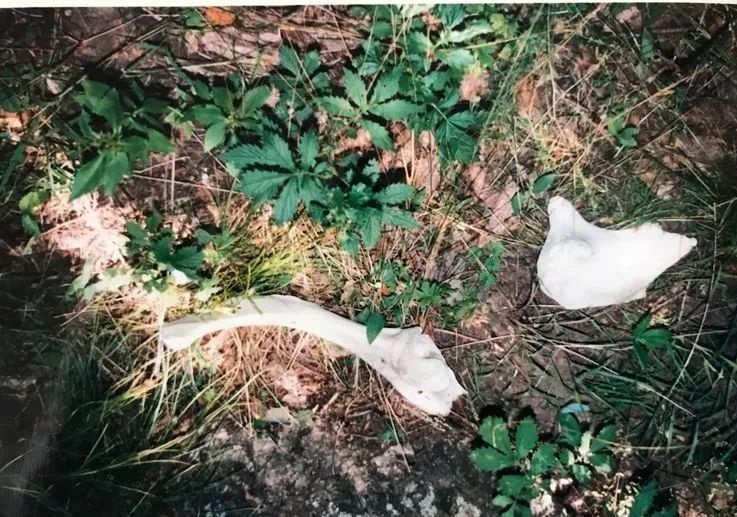
Based on this inference, there should be a large military building located in a very hidden mountain or underground area of Sun Wu. In the autumn of 1990, a tour group composed of former Japanese Kwantung Army soldiers came to Sun Wu and brought a picture of the military history of the 123rd Division. According to analysis, the headquarters of the division located in the Northern Sun Wu region, heading north into the mountains, is the camp area of the 268 and 267 troops. The map indicates that there are large fortifications, hidden passages, underground power stations, warehouses, water wells, shooting shelters along military highways on both sides, and bunkers and forts guarding the mountain pass. These building facilities seem to be guarding an important goal.
At this time, historians of Sun Wu received the original work "The Sun Wu War History of the 123rd Division of the Songfeng Army", which detailed the historical facts of the Japanese Kwantung Army from invading Sun Wu to being defeated and fleeing. Among them, the article by the former commander of the communication team of the division, Shanzang Wamura, was particularly eye-catching. He revealed that there was a permanent underground building commonly known as "Tecang" in the abdominal position of Dingzishan in Northern Sun Wu. Before the war, without a special permit, even officers above lieutenant level were not allowed to approach.
This "special warehouse" is exactly the center of the Sun Wu position, and the division headquarters is "hidden" in this underground tunnel. At the entrance of the "Special Warehouse" position, several tens of meters below the grassland, there are two tunnel entrances in the north and south. The tunnel is very narrow, and only one person can bend over and pass through it at a time, cross the shooting hole in front, and walk down several steps to form the main corridor of the underground command center. The "Special Warehouse" has a division commander's office, staff office, combat room, and communication room inside, and the central institutions of the division are all concentrated here. The walls and ceiling of the "Special Warehouse" were constructed of approximately 1.5 meters thick reinforced concrete, which was capable of withstanding the bombardment of cannons and bombs without being destroyed or broken.
The main corridor of the underground command center "Special Warehouse" of the Japanese invasion fortress in China
The article by Waicun Shanzang provides detailed discussions, as well as several maps indicating the location of the command center, mountain terrain, and architectural structure. With these precious reference materials, it also provides a basis for the final search for the fortress position underground in Shengshan. At the end of the 20th century, Sun Wu County organized a joint exploration team, cleared deep vegetation, climbed wild mountains, and finally found the core of the "Special Warehouse" position of the Japanese Kwantung Army's 123rd Division. But it was destroyed in that war and turned into ruins——
The underground project, which was originally cast with over 70 meters of reinforced concrete, was completely blasted open, like a huge monster with its belly torn open, its belly exposed in broad daylight, and several tons of cement blocks were blown up tens of meters away.
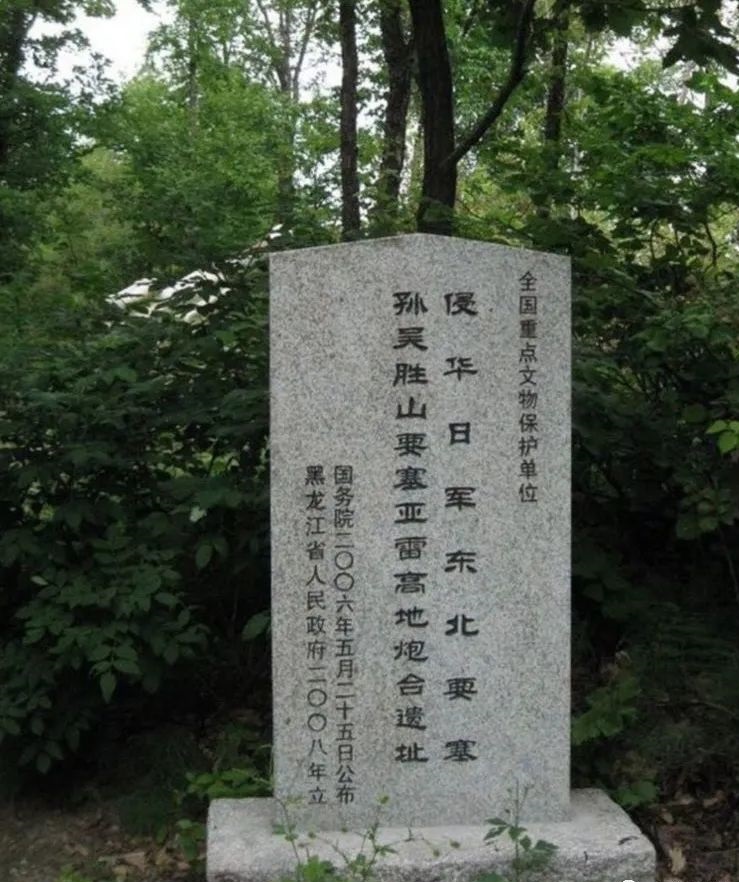
Japanese elderly searching for relatives and kneeling down to pay homage to the souls of Chinese laborers in Shengshan
Standing in front of this pile of ruins under the scorching sun. Although it has been eroded by wind and rain for over half a century, the appearance of yesterday can still be vaguely seen here.
At that time, 3000 Chinese laborers worked hard for eight years under the shadow of the Japanese invading army's swords and whips, building a magnificent project with blood, sweat, and life. However, countless laborers were persecuted and killed due to hunger, illness, and exhaustion. Those who managed to survive were brutally shot and buried alive upon completion, leaving the Japanese invaders with an unforgivable debt of blood in the fortress.
On May 31, 1995, at the foot of Shengshan Mountain, several Chinese people stood with a Japanese elderly man. For a long time, the old man kowtowed to the mountains ahead and all the surrounding mountains, tears streaming down his face. The old man's name is Masayoshi Mimura, who was 68 years old at the time. His brother, Kiichi Mimura, was recruited by Japan into the development team at the age of 19 and has not returned. Later, it was learned from his fellow villager Shiqiao Village that Kiichi Mimura died in Shengshan, Sunwu County, China. Mimura's parents died of depression, and before their death, they instructed Mimura Masayoshi to go to China to pay homage to his brother's lonely soul.
Mimura finished kowtowing and walked heavily up the mountain. The broken walls and bones here made him afraid to face them. Accompanying Yang Bolin, former deputy minister of Sunwu County, told Micun that there were indeed Japanese people who died in Shengshan, but there were also bones of 3000 Chinese laborers. After the completion of Shengshan Fortress, all these laborers were secretly shot by the Japanese army, and none survived. The small hills on the roadside were buried with corpses.
Facing the large mound in the distance, Mimura Masayoshi knelt down, trembling and bowing for a long time. Masayoshi Mimura said that among Japanese people today, especially some veterans, there are already many who have a thorough understanding of that aggressive war. Some anti war groups in Japan have repeatedly called on society: humanity needs peace and cannot tolerate aggressive wars running rampant on Earth. Masayoshi Mimura's trip to the Katayama Fortress came with the call of the Japanese anti war organization.
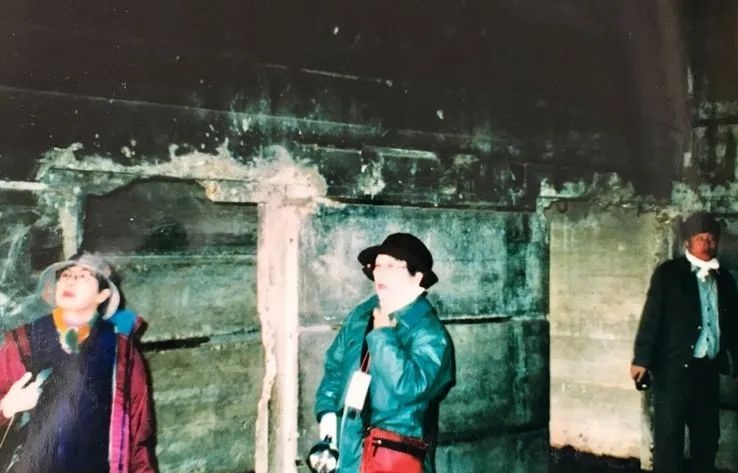
White bone remains can still be seen everywhere in the mountains, and the ruins of the fortress in Shengshan Yaosaire highland are still visible
Mimura Masayoshi also collected a large number of books on the history of Manchukuo and sent them to Yang Bolin, with a total of over 300 books. Mimura said that the unfortunate history of China will not be forgotten by the Chinese people, and the Japanese people will not forget it. It is the misfortune of humanity.
Masayoshi Mimura's anti war actions have prompted more Japanese people with a sense of justice and conscience to join hands. From April 30 to May 3, 1999, China and Japan jointly conducted a four-day inspection activity at the Sun Wusheng Mountain Fortress on the Heilongjiang border. They aim to investigate relics, understand historical truth, promote the cause of peace, and take practical actions to counter Japan's right-wing forces. Mr. Takeuchi Chiichi, a physician who serves as a permanent member of the National Insurance Medical Association of Japan and is also one of the inspection teams for the site of the Sino Japanese joint Heilongjiang border fortress, said that through investigation, we can reflect on the profound disaster this war has brought to the Chinese people. The Shengshan Fortress, as evidence of the Japanese invasion of China, will be engraved in the hearts of the descendants of both sides.
On May 2, 1995, a Sino Japanese joint inspection team conducted an investigation inside the site of the Shengshan Fortress Barracks
Under the sunset, bidding farewell to Shengshan, a gentle breeze blew from the mountains, as if the three thousand undead were calling out.
The present is the continuation of history, and the future is the continuation of reality. Although Shengshan has transformed into a beautiful scenic area, the historical smoke and strong evidence left behind by Shengshan Fortress, with the cool breeze that crosses time and space, give people clarity and contemplation.
